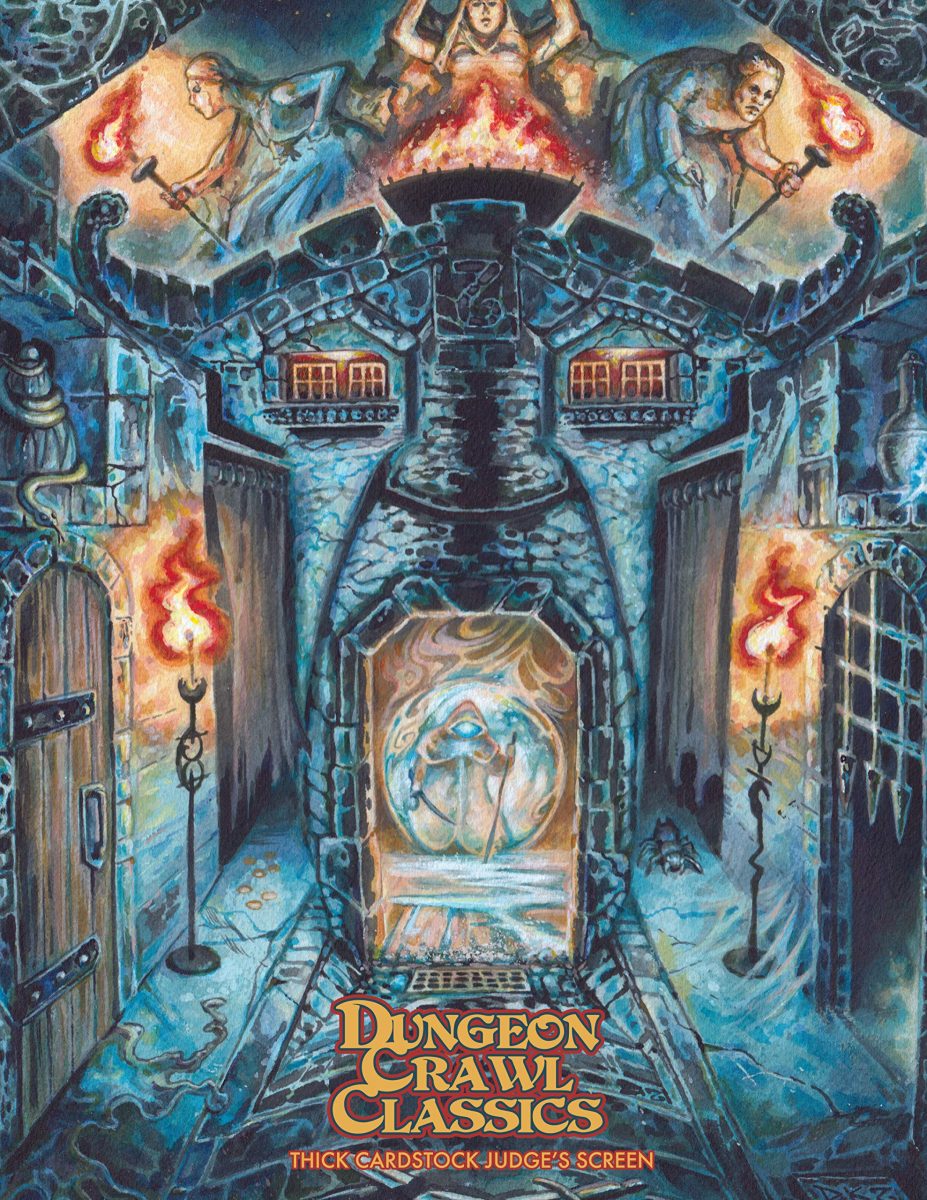The core of tabletop role playing games inherently involves luck. We roll dice to determine outcomes, but in games like Dungeons & Dragons, your chance of success is generally influenced by modifiers derived from your character’s skills and abilities. Well, what happens when a character finds themselves in a situation where success is improbable, but essential for survival? You need a luck mechanic!
As a Dungeon Master, you could stick to the rules and let them fail, or you could fudge the dice—but neither option is satisfying. Why not consider borrowing from the Dungeon Crawl Classics system to spice up your D&D 5e campaign: the luck mechanic.
The DCC Luck Mechanic Explained
In Dungeon Crawl Classics, Luck is one of the six ability scores. You roll 3d6 to determine your Luck score, which then gives you a modifier from -3 to +3.
Lucky Rolls
A unique feature of DCC’s luck is the “lucky roll.” A d30 is rolled to identify a specific roll (like “checks to find or disable traps” or “critical hits”) to which the character’s Luck modifier is permanently applied. This modifier also affects other checks, such as those for critical hits, fumbles, and corruption.
Luck Checks
Also, DCC uses luck checks when a character does something that relies purely on chance. Say, your paladin wants to pick a lock. It’s a roll-under system, so instead of the Judge (DCC’s term for DM) setting a DC, the player rolls a d20 and subtracts their Luck modifier. And the roll has to be under the character’s Luck score. (A negative Luck modifier INCREASES the final result of the roll, making success harder.)
Burning Luck
One of the most fun aspects of DCC’s luck mechanic is the ability for players to burn luck. A player can make a heroic, last-ditch effort by giving up a number of points from their Luck score to add to a single die roll.
Burning luck changes your score permanently, but it can be restored. In DCC, characters who consistently act in line with their alignment might get more luck points at the Judge’s discretion. Acting against alignment can make them unluckier. Thieves and Halflings in Dungeon Crawl Classics restore their Luck at a faster rate than other classes and races.
Make It a D&D 5e House Rule
The simplest way to integrate this luck mechanic into D&D 5e is to treat it as a seventh ability score. Add a box to the character sheet labeled “Luck.” This score would only apply to the lucky roll and attempts the DM judges as purely luck-based.
Tips for bringing DCC’s luck mechanic Into D&D 5e
- Drop Existing Luck Traits: Replace any existing forms of luck (like the Halfling’s Lucky trait or the Lucky Feat) with this new system to keep things consistent.
- Handle the d30: If you don’t have a d30, the Dungeon Crawl Classics core rules suggest a simpler method: roll a d10 with a d6 control die. Add 10 to the d10 roll on a 3 or 4 on the d6, add 20 on a 5 or 6, and add nothing for a 1 or 2.
- Help Halflings and Rogues: Emulate the DCC rules by granting Halflings and Rogues in your 5e game the advantage of restoring their luck faster than others. Be cautious about stacking benefits for a Halfling Rogue.
- Use the 5e Modifier Scale: While DCC uses a modifier scale of -3 to +3, 5e’s scale ranges from -5 to +10. To reduce confusion for your players, use the 5e ability modifier scale for the Luck score.
- Grab the DCC Rules: The official Dungeon Crawl Classics Quickstart Rules (which include the full luck rules and the lucky rolls table) are often available for free, or you can pick up the core rulebook or the DCC Reference Guide.
Give this house rule a shot in your 5e game. The introduction of the luck mechanic allows for truly heroic, cinematic moments, where a character can permanently sacrifice a piece of their destiny for one glorious success.
Watch the Video | Buy TTRPG Books and Accessories | More Game Content | Buy the DCC
If you purchase any products linked on our website, we may receive an affiliate commission.


